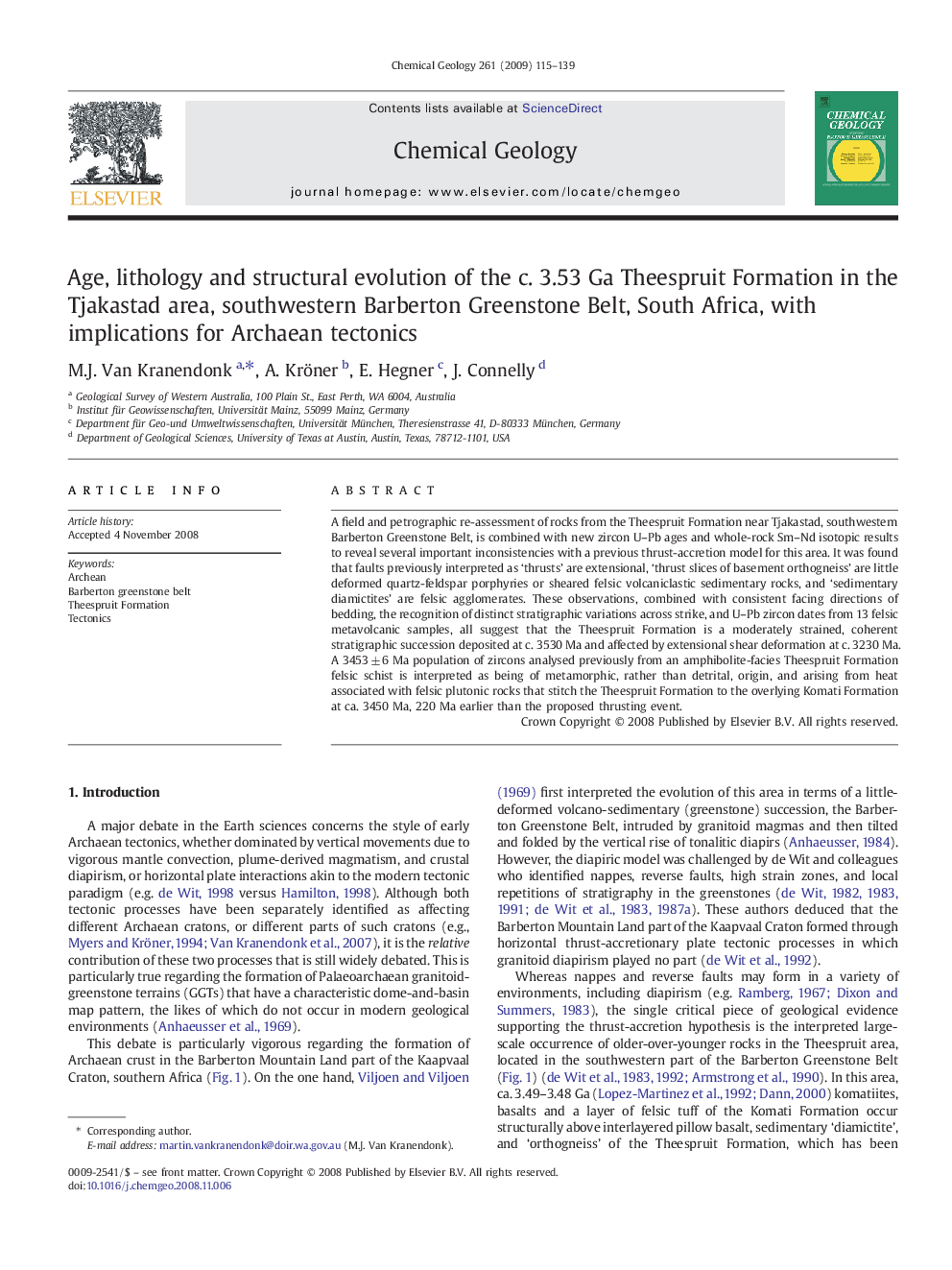| Article ID | Journal | Published Year | Pages | File Type |
|---|---|---|---|---|
| 4700499 | Chemical Geology | 2009 | 25 Pages |
A field and petrographic re-assessment of rocks from the Theespruit Formation near Tjakastad, southwestern Barberton Greenstone Belt, is combined with new zircon U–Pb ages and whole-rock Sm–Nd isotopic results to reveal several important inconsistencies with a previous thrust-accretion model for this area. It was found that faults previously interpreted as ‘thrusts’ are extensional, ‘thrust slices of basement orthogneiss’ are little deformed quartz-feldspar porphyries or sheared felsic volcaniclastic sedimentary rocks, and ‘sedimentary diamictites’ are felsic agglomerates. These observations, combined with consistent facing directions of bedding, the recognition of distinct stratigraphic variations across strike, and U–Pb zircon dates from 13 felsic metavolcanic samples, all suggest that the Theespruit Formation is a moderately strained, coherent stratigraphic succession deposited at c. 3530 Ma and affected by extensional shear deformation at c. 3230 Ma.A 3453 ± 6 Ma population of zircons analysed previously from an amphibolite-facies Theespruit Formation felsic schist is interpreted as being of metamorphic, rather than detrital, origin, and arising from heat associated with felsic plutonic rocks that stitch the Theespruit Formation to the overlying Komati Formation at ca. 3450 Ma, 220 Ma earlier than the proposed thrusting event.
